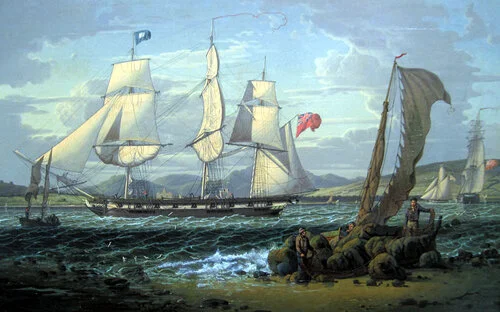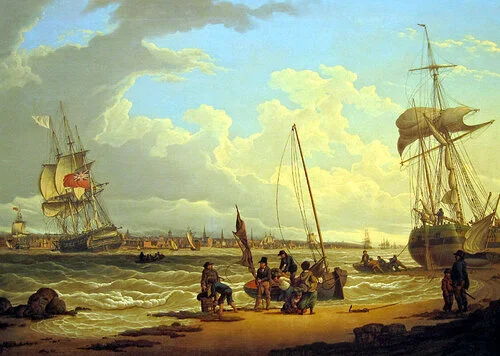Robert Salmon
(1775 - 1845)
Click on any of the images for painting dimensions and pricing
Robert Salmon was born in Whitehaven, England in October or November, 1775. The son of a jeweler, there does not seem to be much record of his early life, but what is known is that he had a familiarity of sailing ships and an intimate knowledge of how they worked.
In April, 1811 he moved from the Liverpool area to Greenock, Scotland and then back to Liverpool in October of 1822. In 1826 he returned to Greenock, then he left for London in 1827, and shortly thereafter he went to Southhampton, North Shields and Liverpool.
Choosing to make major change, Salmon sailed to Boston arriving on New Year's Day, 1829 and staying until 1840. Living in a but overlooking the Boston harbor, Salmon prospered as a marine painter, accepting commissions to paint ship portraits. He was thought to be an eccentric, solitary and irascible man.
Robert Salmon developed an individual style of painting characterized by precision of detail. Possessing a distinct formality, they were carefully crafted and highly disciplined works of art. Salmon earned the title as the "Father of Luminism" in America having a great influence on Fitz Hugh Lane (1804-1865) and other American Luminists.
His eyesight began to fail by 1840 so he left Boston to return to his native England where he is thought to have died circa 1845. His known production of works amounted to about nine hundred ninety-nine; however, some of his earliest works and some of his latest works are thought to be undocumented.
His paintings can be found in the following museums, the U.S. Naval Academy; Museum of Fine Arts, Boston; National Maritime Museum, Greenwich; Walker Art Gallery, Liverpool; New Britain Museum of American Art, Connecticut; Yale Center for British Art, New Haven, Connecticut; Mariners Museum, Newport News; William A. Farnsworth Art Museum, Rockland, Maine; Peabody Museum of Salem; Shelburne Museum, Vermont; Worcester Museum of Art, Massachusetts.

